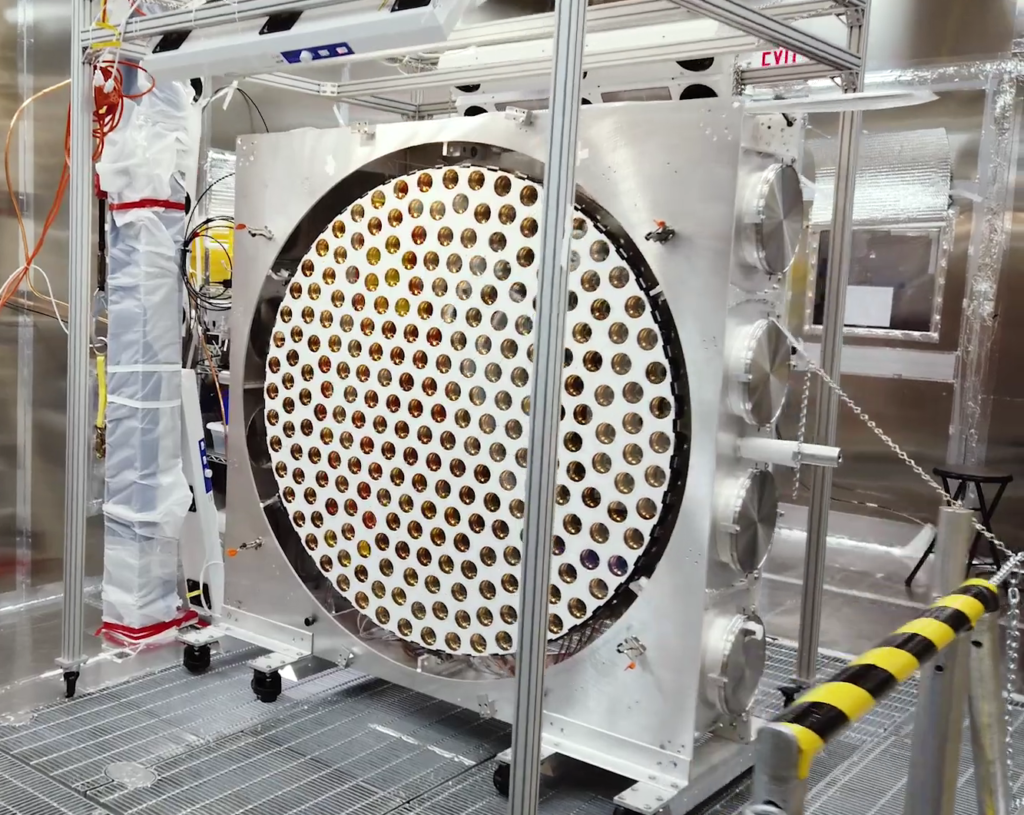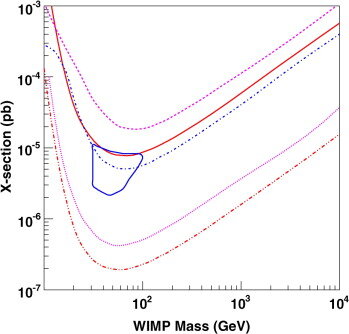Redefining the Dark Matter Landscape: LZ Experiment’s Groundbreaking Results

A notable advancement in the LZ experiment is the implementation of a technique to actively tag background electronic recoils from β decays. This method enhances the detector’s ability to distinguish between potential dark matter interactions and background noise, thereby improving the overall sensitivity of the experiment. The LZ Collaboration recently released the results of the first experimental run of the LZ dark matter experiment. These results, published in Physical Review Letters, set new constraints on the interactions between dark matter and other particles, which could inform future searches for weakly-interacting dark matter candidates.
Advancements in Sensitivity and Detection.
In August of 2024, the LUX-ZEPLIN (LZ) collaboration made significant progress in the exploration of dark matter, unveiling groundbreaking results from their first experimental trial. Deep underground, the Sanford Underground Research Facility in South Dakota conducts the LZ experiment, which is one of the most sensitive dark matter detection experiments in the world. Through this collaboration, the detection of dark matter has become more sensitive than ever before in capturing rare interactions between dark energy particles and ordinary matter, with unprecedented precision.
The LZ team’s discovery of interactions at energy scales unmet by any dark matter detector. They concentrated on weakly interacting massive particles (WIMPs), which are a leading candidate for dark matter. WIMPs are believed to interact with ordinary matter through the weak nuclear force, making their detection highly difficult due to their faint nature. The initial experiment allowed LZ to identify interactions that are more delicate than ever before, exceeding experimental sensitivity.
These discoveries help narrow down the range of potential features of WIMPs. The LZ results have imposed more stringent constraints on the mass and cross-section of WIMPs, which may reduce the probability of certain theories and models of dark matter. The experiment is aiding in the refinement of theoretical dark matter models by excluding a more diverse range of WIMP features, which will ultimately lead to more comprehensive investigations.
The sensitivity improvements have significant implications for the wider field of particle physics. Identifying and describing interactions at these fundamental energy levels opens up new avenues for comprehending the basic forces of nature. The discovery of a conclusive label for dark matter is expected in future experiments using LZ and other similar techniques, which could aid in the exploration of the universe’s concealed components.
Additionally, the LZ partnership’s ability to increase sensitivity is a significant stride in the exploration of dark matter, which is one of the most critical puzzles in modern physics. With ongoing collaboration and the collection of additional data for further analysis, the limitations on WIMP properties will only become more pronounced, leading the field towards uncovering the mystery of dark matter. The results will be used in future experiments and collaborations, potentially leading to a significant breakthrough that could revolutionize our understanding of the universe.
Innovative Techniques Enhancing Detection Sensitivity

An innovative method to actively tag background electronic recoils from decays has been integrated into the LUX-ZEPLIN (LZ) experiment. This is of great significance. The use of this technique significantly enhances the detector’s ability to differentiate between potential dark matter interactions and unwanted background noise, thereby improving the experiment’ overall sensitivity.
One of the primary challenges in dark matter detection experiments such as LZ is to distinguish between rare interactions of these dark-membrane particles and more common background signals coming from natural radiation or other sources. Due to their potential mimicry into decays, background electronic recoils can be difficult to characterize (as they often do) and are analogous to signals from dark matter interactions. Without labeling, the false signals could compromise the results and make potential dark matter detections less visible.
To combat this, the LZ team has devised a sophisticated technique to actively detect and label these electronic blowholes in real-time. For this purpose, it is necessary to accurately measure the timing, energy, and spatial distribution of events within the detector. By using this technique, the experiment can effectively differentiate between the characteristic signatures of dark matter interactions and the background noise from decays.
Dark matter interactions are likely to have distinct time signatures from background events, as they involve weak interactions that can generate very low-energy signals over a longer period of time. In contrast, higher-energy decays in decay are usually more focused on the localization of time and space.evt. Potential dark matter signals can be more accurately detected in the LZ experiment by analyzing these differences. However, this approach requires significant refinement.
By actively tagging background noise, the detector is able to detect dark matter interactions more effectively and the experiment can be conducted at lower energy levels. Rare dark matter interactions that were previously unobservable with less sophisticated methods can now be detected thanks to the increased sensitivity.
Beyond the LZ experiment, this innovation has a significant impact. The new approach offers a unique approach that could be used in other dark matter detection efforts, as it provides more precise and efficient methods for distinguishing signal from noise.
Looking Ahead: Future Prospects in Dark Matter Research
The LUX-ZEPLIN (LZ) collaboration is poised to continue its pivotal role in dark matter research through ongoing data collection and analysis. The experiment aims to either directly detect dark matter particles or further constrain their potential properties, thereby advancing our understanding of the universe’s fundamental components.
Ongoing Data Collection and Analysis
Since its first science run, LZ has achieved world-leading sensitivity in the search for dark matter, particularly in detecting weakly interacting massive particles (WIMPs). The collaboration plans to collect 1,000 days’ worth of data before concluding operations in 2028. This extensive data collection is expected to significantly enhance the experiment’s sensitivity, potentially leading to the first direct observation of dark matter.
Future Prospects
Looking ahead, the LZ collaboration is focused on refining its detection capabilities and exploring new analysis techniques to probe lower-mass dark matter candidates. By improving the precision of their measurements and expanding the range of detectable WIMP properties, LZ aims to provide critical insights into the nature of dark matter.
The ongoing research by the LZ collaboration is expected to play a pivotal role in the broader effort to understand the fundamental components of the universe. By either detecting dark matter directly or further constraining its possible properties, LZ contributes to the global scientific endeavor to uncover the mysteries of dark matter, which constitutes a significant portion of the universe’s mass-energy content.
In summary, the LZ experiment’s commitment to continuous data collection and analysis, coupled with its innovative detection techniques, positions it at the forefront of dark matter research. The collaboration’s efforts are anticipated to yield significant contributions to our understanding of the universe’s composition and the fundamental forces that govern it.
